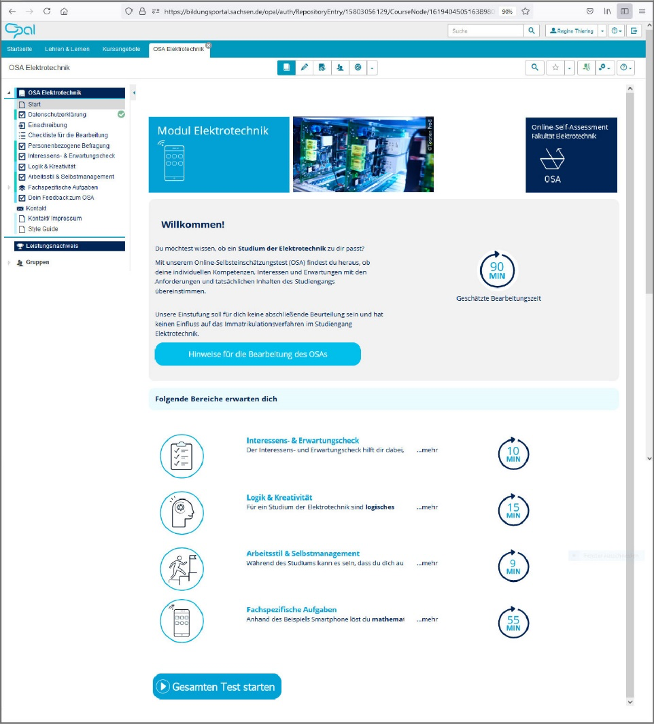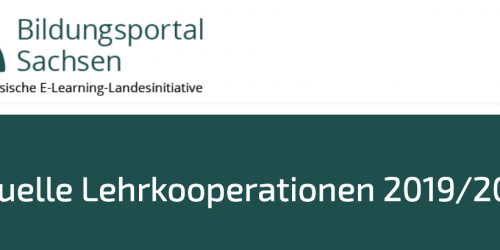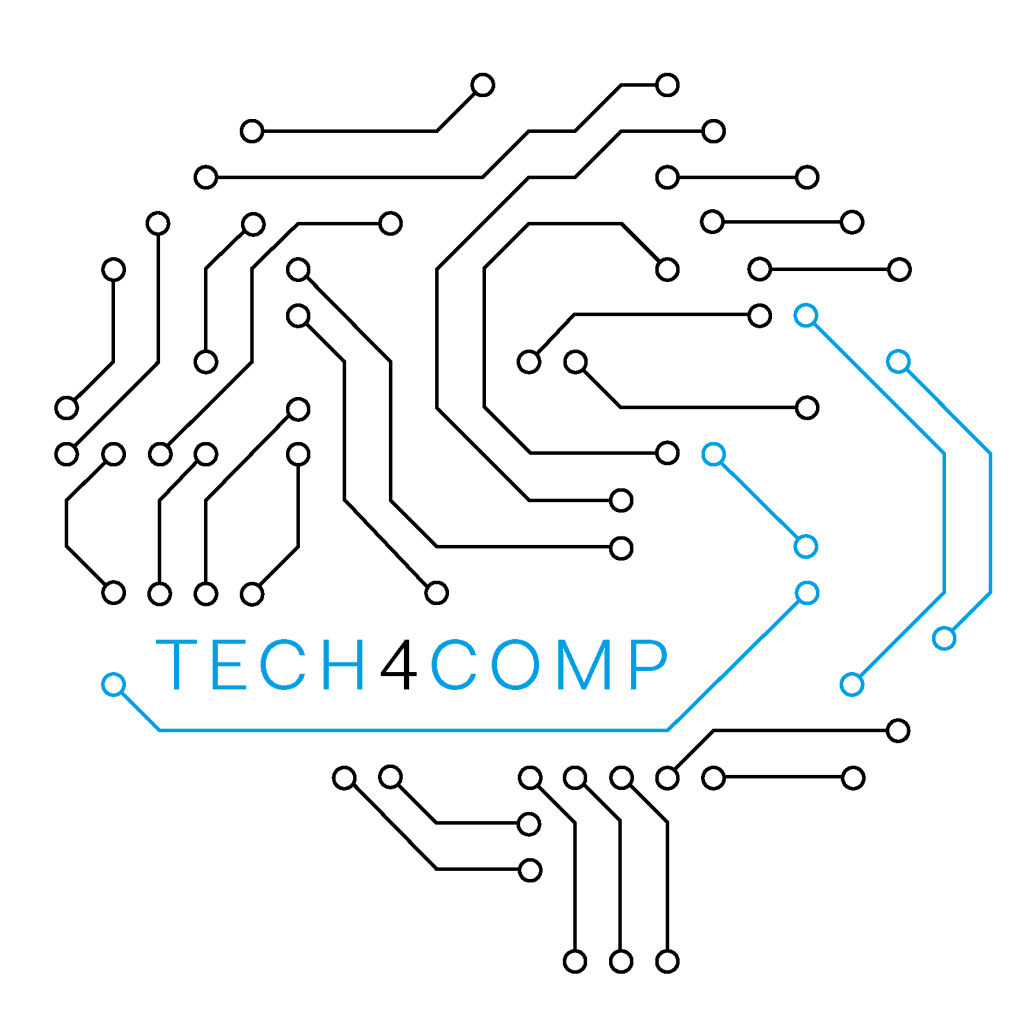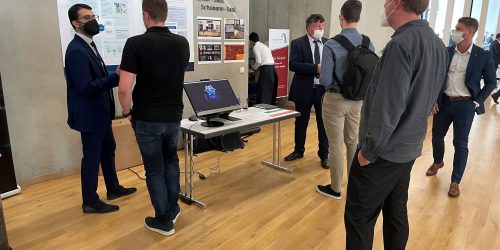Supporting study choice decisions – OSA 3.0 promotes targeted engagement with engineering courses
"Mechatronics, electrical engineering or mechanical engineering - what should I study?" The search for orientation in the variety of 15 different engineering courses at the TU Dresden presents prospective students with a large selection of options. Many criteria play a role in making the right decision. The "Online Self-Assessments for Prospective Engineering Students (OSA 3.0)" project supports this decision-making process in a systematic way.
Against the background of the Free State of Saxony's need to secure skilled workers and managers, the TU has set itself the goal of supporting study choice decisions and promoting study success in its study success concept. An interdisciplinary project team at the TUD is developing web-based study orientation tests, so-called online self-assessments (OSAs). The OSA 3.0 pilot project, which is already being successfully continued in its third project period, is creating a study orientation offer. Here, prospective and new students are given the opportunity to examine their personal skills, interests and expectations at an early stage. These are compared with the requirements and actual content of the desired degree program using the self-assessment tests, from which immediate feedback is derived. Using two different self-test modules, a psychological test section and a subject-specific task section, interested parties can intensively deal with the framework conditions of an engineering degree at the TUD and also check their suitability for certain degree programs. The test results can be used for individual study advice. The self-tests are free and can be accessed online at any time. The only requirement for participation in the OSAs is registration on the OPAL learning platform, where the OSAs are made available.

Welcome screen of OSA Elektrotechnik
In the development phase of the three pilot OSAs - electrical engineering, mechatronics and mechanical engineering - our team at the media center is responsible for developing the overall media didactic concept. This includes media didactic recommendations when creating the specialist tasks, as well as the development of a design style guide to visually link the individual specialist areas. We also advise the respective creators of the specialist content on the technical implementation options within the ONYX test tool, check the functionality and ensure the technical implementation.
The entire development process is documented by the interdisciplinary project team in a manual that is intended to serve as a guideline for the development of future OSAs. We provide structural suggestions, coordinate the writing process and ultimately combine the individual documents into a manual.
We are currently working on optimizing the usability of the online self-assessments. The aim is to ensure that the self-tests are intuitive and conducive to learning for the target group. The user interface, as well as the technical framework of the test, should enable a flawless and appropriate engagement with the content. Last but not least, the OSAs should appeal to prospective students and appeal to them visually, ideally offering a pleasant user experience overall. At present, some points have already been met, others can only be implemented with restrictions in OPAL or ONYX, depending on the technical framework of the tool. The optimization phase is therefore a balancing act between the technical limitations on the one hand and comprehensibility on the other.
The best way to check whether the optimization has been successful is to use feedback from the target group. The process of designing usable interactive systems[1] provides for an iterative process for the entire design process, which repeatedly involves users in various development steps, as well as in one of the final steps. The product is then evaluated based on user feedback.
For this feedback process phase, we have designed two different usability tests: an asynchronous and a synchronous test. In this case, asynchronous means that interested parties carry out the online self-assessment independently. They are then asked to fill out an online usability evaluation questionnaire.
In the synchronous test, we accompany students virtually during a live OSA. With the help of the screen and sound transmission, we can follow the processing steps and mouse pointer movements, as well as 'hear' the thoughts and impulses that they are supposed to express out loud during processing. This method is called 'thinking aloud' and offers the valuable advantage that we can directly experience the immediate cognitive processes, triggered emotions and expectations, as well as the intentions of the users during processing. This method enables us to obtain unfiltered impressions in which the distortion effect of social desirability in response behavior is reduced.[2].
For the synchronous usability tests, our project team is looking for interested students in grades 11 to 13 who would like to put the online self-assessment through its paces. An interest in MINT subjects (mathematics, computer science, natural sciences and technology) is an advantage, but not a mandatory requirement for participation. A laptop, tablet or PC should be available and a headset with a functioning microphone, as well as a time slot of 60-90 minutes. The usability tests are planned for the period from mid-September to the end of October. As a thank you, the first 10 participants will receive a gift voucher worth 10 euros.
Interested parties are welcome to contact project employee Theresia Zimmermann (theresia.zimmermann@tu-dresden.de) report.
Further information on the process and the technical requirements of the usability test can be found at https://tu-dresden.de/mz/projekte/projekoverview/osa.
[1] DIN EN ISO 9241-210: Ergonomics of human-system interaction – Part 210: Human-centered design of interactive systems
[2] Baur N.; Blasius J.; Wiesbaden (2014): Handbook of Methods of Empirical Social Research
Authors: Regine Thiering, Theresia Zimmermann






